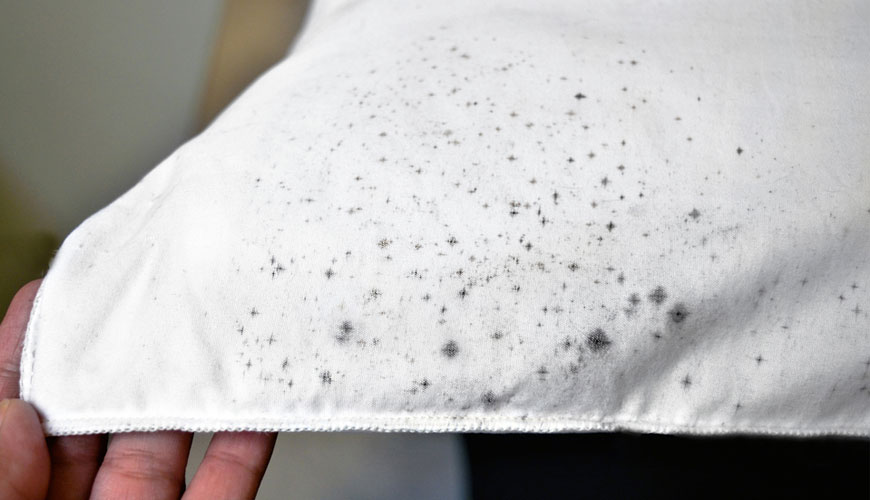

EUROLAB laboratory provides testing and compliance services within the scope of AATCC 30 standard. The AATCC 30 standard is designed to determine how susceptible textile materials (fabric, gauze or similar objects) are to mold and fungus growth, and to evaluate the effectiveness of fungicides applied to selected materials.

The AATCC 30 method is divided into different test types, two of which are available (Test III and Test IV). Test III acts similarly to what the Standard Interference Zone Test covers, while Test IV specializes in hydrophobic textiles and has similar properties to ASTM D3273.
AATCC 30 Test III - Agar Plate
The fungus indicated by the method, Aspergillus niger, is grown on solid media and a spore suspension is formed after the appropriate growth time. Depending on the difficulty level of the test, an agar medium is prepared with or without added carbon source. Solid agar medium in the Petri dish is inoculated with the spore suspension prior to insertion of the test specimen.
The test sample is placed on the inoculated agar medium and the spore suspension is inoculated onto the top of the sample after insertion. Petri dishes are sealed to retain moisture while incubating. The irradiated test sample is evaluated after 7 or 14 days and graded for macroscopic (visible to the naked eye), microscopic or growth.
AATCC 30 Test IV - Moisture Plate, Mixed Sports Suspension
Fungi are grown on solid media and a spore suspension is prepared with the fungal strains aspergillus niger, penicillium variants and trichoderma virus. The spore suspension is washed and prepared according to method specifications. Both control and test textiles are saturated in a growth medium. Each side of the saturated test substance and control was inoculated with the spore suspension. The saturated textiles are suspended in separate, closed jars containing liquid medium for moisture. Inoculated textiles are evaluated after 14 or 28 days and evaluated for macroscopic, microscopic or growth.
Mushroom aspergillus niger is used as microorganism during the test. This organism is grown in solid medium and a spore suspension is formed after the appropriate growth period. Depending on the difficulty of the test, an agar medium is prepared. The test sample is placed on the inoculated agar medium and the top is inoculated with spore suspension. Petri dishes are sealed to maintain moisture while incubating. The inoculated test sample is evaluated after 7 or 14 days and whether it is macroscopic or microscopic or whether there is growth.
The AATCC 30 test method is a test method that evaluates the antifungal capabilities of the test substance under very stringent conditions. This is a good indicator of antifungal activity compared to other relatively less rigid methods. The test substance comes in contact with a large number of sports for more effectiveness. It is a more accurate test than many other fungal methods and any growth inhibition shown in this test is due to the antimicrobial effect of the test substance.
Our organization, EUROLAB, provides antifungal evaluation and mold resistance testing services within the framework of national and international standards with its trained and expert staff and advanced technological equipment, among numerous test, measurement, analysis and evaluation studies. Contact EUROLAB to get testing service under the AATCC 30 standard.
To get an appointment, to get more detailed information or to request an evaluation, you can ask us to fill in our form and reach you.